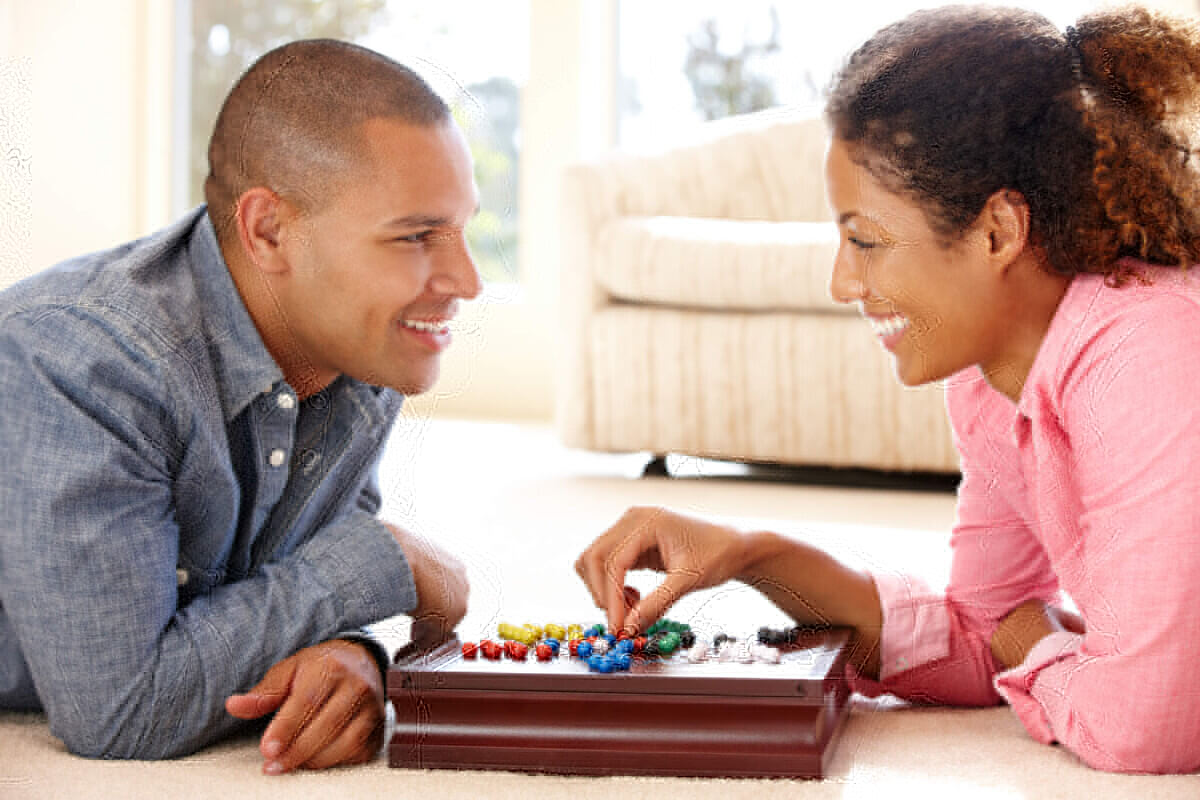
Couple playing a board game (© Monkey Business - stock.adobe.com)
WACO, Texas — If you're looking to reconnect with your partner, a new study finds that all you may need to do is dust off your favorite board games sitting in the closet, or take an art class together.
Researchers at Baylor University found that couples who engage in collaborative art projects or play board games together release oxytocin, which scientists call the “hugging hormone,” in higher levels. Interestingly, the researchers also found that men who paint release even greater amount of the hormone out all the groups and couples they studied.
Oxytocin is associated with bonding and family cohesiveness, and the fact that male painters released far more of the hormone than couples playing board games surprised the researchers, as did the amount of oxytocin released by painting couples and board game players.
“We were expecting the opposite — that couples playing the board games would interact more because they were communicating about the games and strategies, or because they were competing, and with more interaction, they would release more oxytocin,” says Dr. Karen Melton, assistant professor of child and family studies at Baylor, in a university release.
The study also shows that couples taking painting classes engaged in touching each other more often than couples playing board games together. The researchers expected the other way around: they thought painting couples would pay more attention to the instructor during the class compared to those who played board games, where there was no instructor to watch or listen to.
“Typically, an art class is not seen as an interactive date with your partner. But sometimes couples that were painting turned the activity into a bonding time by choosing to interact — putting an arm around their partner or simply saying, ‘Good job,’” Melton explains.
Melton and her team recruited 20 couples with partners between the ages of 25 and 40. They were randomly assigned to participate in one of two possible couple dates: game night or couples art class. The dates lasted one hour. One group played board games in a familiar, home-like setting. The couples didn't play with any other couples or individuals. The games were widely-known or simple enough to not require the couples to read the game instructions.
The other group enrolled in painting classes for couples at a community art studio. They participated in two groups of five couples, each painting a simple beach scene with their initials in the sand. The art instructor arranged the canvases in such a way to reduce interactions between couples.
The researchers measured their participants' oxytocin levels with urine samples before and after each group's activities. They also used a six-item survey about each couple's familiarity with the activities and about their communication, eye contact, and touch during their activity sessions.
What struck the researchers about the findings was that interaction and touching between partners wasn't required — it all happened naturally.
“This has implications for the everyday family – to find those small, meaningful ways to interact when they’re eating dinner together or going for a walk or doing homework with a child or sitting on their couches with their iPad,” Melton says.
The study was published in the Journal of Marriage and Family, the official scientific journal of the National Council on Family Relations.










